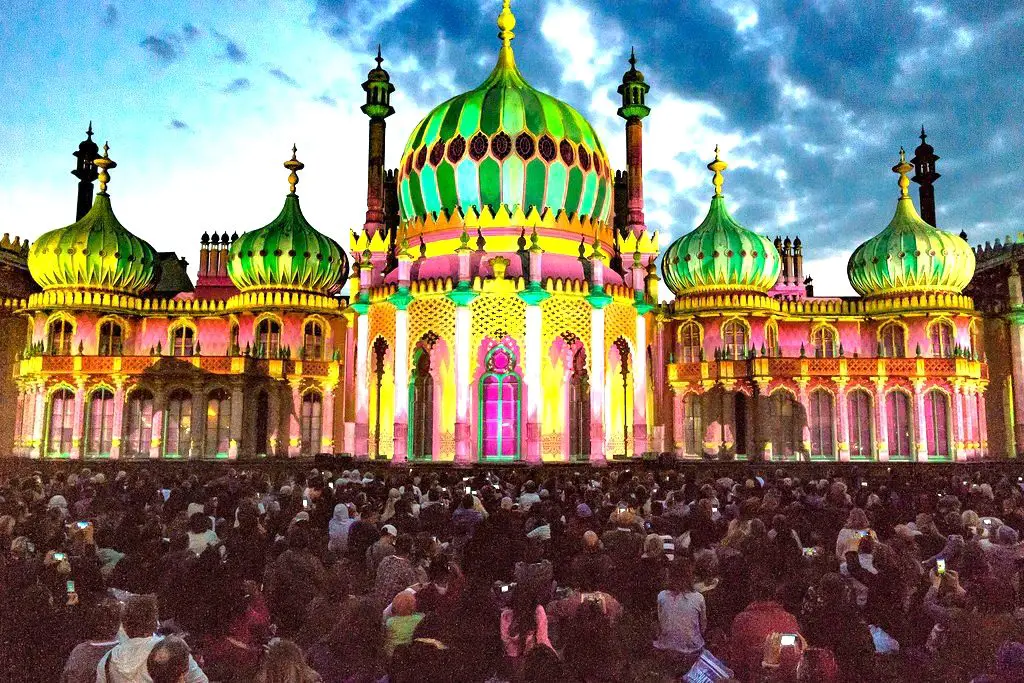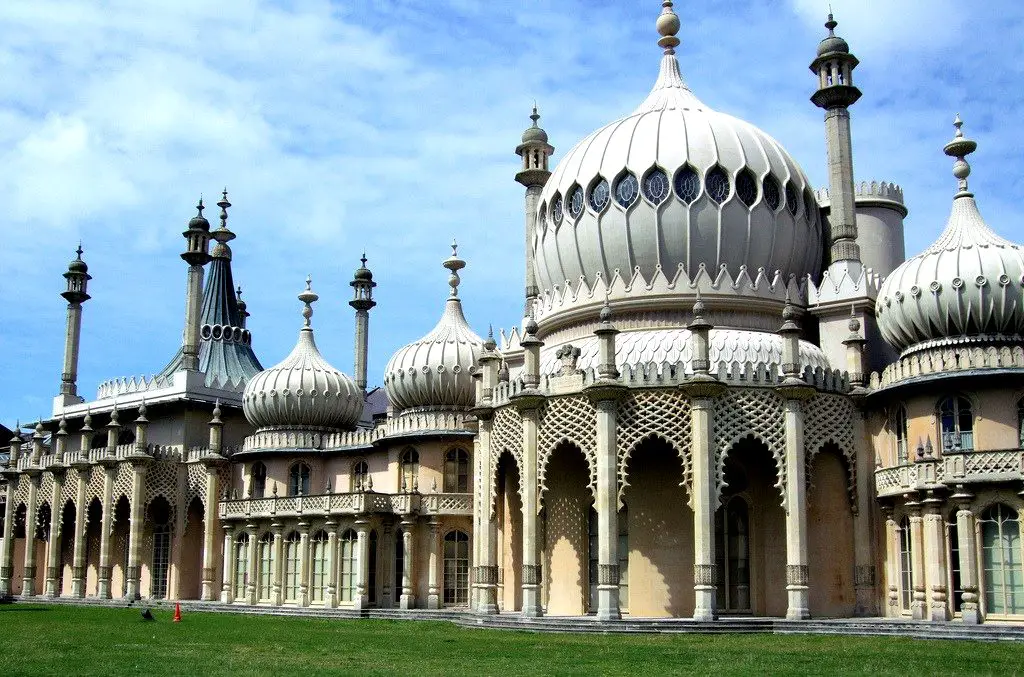The Royal Pavilion, with a vibrant history that stretches back over two hundred years, is an iconic building in Brighton. It was built as a sea-coast retreat and palatial structure for King George IV. It was also used as an administrative building and even as a hospital during the First World War.

The Initial Stage
George IV, who was then a Prince of Wales in the year 1878, authorised the development of a modest lodging into an impressive eastern styled palace. The Prince had even bought the land that surrounded the building property.
He built several stables and a turned the land into a lovely riding school. Later, in the year 1815, another designer John Nash extended the Pavilion space and redesigned it into a majestic palace of Brighton. The beautiful exterior and the unique interior designs were well-influenced by 19th-century architecture prevalent in India and China. It is a classic example of exotic design seamlessly blending both the Islamic and Royal English style.
The 18th century Brighton Township
In the late 18th century, Brighton was a quaint fishing town that was slowly developing into a seaside holiday retreat for the wealthy class Englishmen. Its main advantage was that it was close to developed cities like London. The seaside coast was also popular for its therapeutic sea-water properties according to reputable physicians of those times. Thus, the Prince of Wales decided to give a try to the special sea-water remedies and enjoy the equable climate of Brighton.
Luxurious Comfort
George wanted to make an ideal palace that provided every sort of luxury and comfort. He made his architect designers work extra hard and provide the best lightings along with modernised plumbing, heating, and sanitation services. The new sleek and perfectly planned kitchen rooms were also an ingenious idea. As the palace construction thrived, so did the place prosper and soon Brighton became a hub for high-class social gatherings. Brighton’s meagre population from 3600 inhabitants grew to an astounding figure of 40,600 from the period between 1786 to 1831.
The rebuilding work of the palace gave employment opportunities to the unemployed people in the town such as labourers, craftsmen, and traders. The royal presence, George’s high profile guests and elite society members all helped the local businesses and service industries to flourish.
The Long-Standing Architectural Wonders

Even today, you can marvel at the wondrous sea-front squares, moon crescents, and impressive buildings in Hove area and Kemp town area. They give glimpses of the Regency era during King George’s Regency era. After George IV death, King William IV, his successor also resided in the Pavilion palace during his visits to the town.
In the year 1850, Pavilion was sold to the town for 53,000 pounds under the Brighton Improvement Act. All the royal stables were redesigned into a huge concert hall called ‘Brighton Dome’. It was used as assembly rooms. Many original furnishings were returned by the Royal family after World War I. And soon enough, the municipality heads of Brighton worked earnestly to restore the beautiful Pavilion Palace to its original state. Programmes were conducted to restore the rooms, re-install the walls and create exact replicas of the furniture pieces and other fittings.
During the 20th Century
The Pavilion was not merely a decorative building, it was also used for a humanitarian purpose when the palace was transformed into a civic-military hospital. For two years it was a refuge for the sick and war-stricken soldiers of the Indian army. From the year 1914 to the year 1916, it was known as the Pavilion Hospital with 2 round-the-clock operating theatres and more than 720 beds.
The wounded Indian soldiers were visited by Royal members like King George V in the year 1915.
In 1916, the Pavilion Hospital treated British soldiers who had undergone amputation. The building was given back to Brighton Corporation in the year 1920.
Tourist Attraction
Royal Pavilion is one of the major tourist attractions in Brighton. Today, more than 400,000 tourists visit the majestic Royal Pavilion every year. According to trusted sources, many of the valued items and furnishings inside the palace are on a loan basis, and therefore cannot be photographed or even reproduced without official permission. Apart from being a tourist hotspot, the Royal Pavilion is a certified wedding venue. It has hosted numerous lawful same-sex marriages in the UK.
Royal Garden
The Pavilion outdoor space, which showcases some great number of plant varieties, is acknowledged as a prestigious Regency garden in the United Kingdom. Fully organic gardening techniques are used to grow many wondrous flower and plant form. The Historic society in England declared that the garden was ‘At Risk’ after observing criminal activities like drug abuse, indecent sexual activity, and other anti-social activities.
These incidents were reported to the council committee in the year 2017. The pristine garden surroundings were also blighted by ungainly fences, dirty litter bins, and glaring lighting. Fencing off the premises to close them at night was also being considered by the Brighton city council to protect the historic Royal Pavilion.